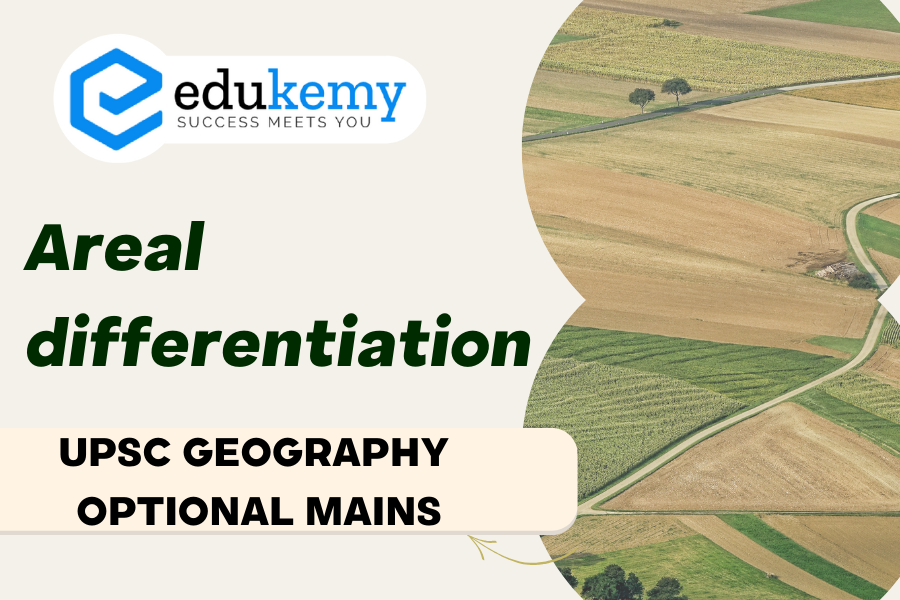
Areal differentiation, as a fundamental concept in Human Geography, encapsulates the sequential and dynamic development of spatial patterns and variations across the Earth’s surface. This concept traces the evolving nature of human societies and their interactions with the environment, illustrating the intricate process through which distinct regions acquire unique characteristics over time. The sequential development of areal differentiation is deeply rooted in the interplay of physical and cultural factors, where geographical features, climate, resources, and human activities contribute to the formation of diverse landscapes and socio-economic patterns. Understanding this sequential progression allows geographers to unravel the complexities of spatial organization, enabling a comprehensive analysis of how societies shape and are shaped by their geographical contexts.
Contents
Answer
Areal Differentiation (AD) is a study of the uniqueness of a region, given by Hartshorne. It ultimately led to the genesis of Regional geography.

History of this concept can be traced back to the Greco-Roman Era:-
Greeks-Roman Era-
Hecateus of Miletus(550 BC-476 BC)- ‘Ges Periodos’. Tried for a Description of Earth and Human elements in it.

Strabo – ‘Geographia’. In this, he paid great importance to the description of places and Regional study. He laid down the foundation of ‘chronological writing’ in geography. He described Europe, Asia, and Africa.
Pre- Classical Phase–
Bernard Varenius – ‘Geographia Generalis’. Discussed geography as twofold divisions of Special/ Regional geography and Systematic/General geography. Special geography has the main aim of depicting spatial patterns of distributions for providing inputs for practical use by the Government of a region. He included descriptions of places based on climate, Terrestrial conditions, relief, Forest, and unique historical aspects of a place.
Immanuel Kant provided a division of study into Logical Classification and Physical Classification. His Physical Classification talked about the nature of geography as a Chronological Science, which being descriptive in approach deals with space dimension.
Chronological = Physical + Human Elements of a Place.
The era of debates –
Richthofen Regional synthesis – He underlines the goals of geography as an exploration of the Relationship of
Man to Physical Earth. His Approach to the study of areas is Synthetic and Descriptive.
Alfred Hettner saw geography as the study of Earth’s surface as the home of man, hence he paved the Areal Character of Earth’s surface as the Primary Task of geography.
OTTO SCHLUTER departed from popular Hettnerian view and claimed that geography should be considered as the ‘Science Of Morphology of Landscape’ and not Specifications. His Landscape definition was the visual perception of an area.
CARL SAUER -‘The morphology of landscape’ 1925. He finds geography as the study of things associated with the Area on Earth’s surface and differences like Areal Aggregations from place to place regarding both Physical and Cultural Factors.
SCHAEFER in 1953 criticized both Areal Differentiation and EXCEPTIONALISM in geography. He defined geography as the ‘Science of Spatial Arrangements’ and his debate with Hartshorne has an important role in the development of Areal Differentiation to such a Fundamental Concept.
However, the Concept of Areal Differentiation was challenged by Schaefer and rejected by Ackerman, for being Sterile and as a divider for Earth’s Unity. Areal Differentiation along with chorology became the Conceptual and Theoretical Background for Regional Geography. The concept continued even in Humanistic Geography (though not Positivism) and up to the modernization Phase and ultimately gave rise to Regional geography which is still used throughout the world for Developmental Models and Regional Planning as a Fundamental Concept.
In case you still have your doubts, contact us on 9811333901.
For UPSC Prelims Resources, Click here
For Daily Updates and Study Material:
Join our Telegram Channel – Edukemy for IAS
- 1. Learn through Videos – here
- 2. Be Exam Ready by Practicing Daily MCQs – here
- 3. Daily Newsletter – Get all your Current Affairs Covered – here
- 4. Mains Answer Writing Practice – here

